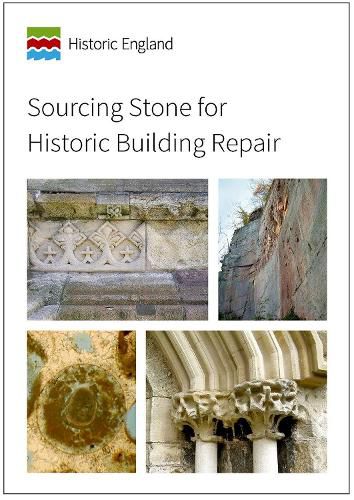Readings Newsletter
Become a Readings Member to make your shopping experience even easier.
Sign in or sign up for free!
You’re not far away from qualifying for FREE standard shipping within Australia
You’ve qualified for FREE standard shipping within Australia
The cart is loading…






This Technical Advice Note is aimed at architects, surveyors, engineers, building managers, contractors, conservation officers and owners who need to obtain matching stone for repairing a historic building or monument.
Successful stone replacement requires detailed knowledge of the characteristics of the stone involved and the selection of compatible materials (that is stone that closely replicates the original in terms of its chemical, physical and mineralogical properties).The stone-sourcing process involves several steps:
* establishing the significance of the building, and the likely impact of intervention
* understanding why the stone is deteriorating
* undertaking a survey to determine the need for stone repair or replacement
* determining the types of stone used, by visual examination in situ
* answering any technical questions arising in the steps above, by detailed analysis of samples taken from the structure
* obtaining samples of potential replacement stone for analysis, and testing these where necessary
* sourcing replacement stone from existing quarries, quarries temporarily
re-opened for the purpose or by re-using stone salvaged from a demolished structure
Advice on each step is provided, enabling readers to make informed decisions at every stage of the procurement process and thus helping to ensure that any new stone is compatible with the historic fabric.
Historic England supports the need for strategic and sustainable sources of stone for conservation of historic buildings. It is working with partners to ensure that historic sources of important building stones are identified and protected, and that the environmental impact of their extraction is minimised. Addressing the wider issues arising from sourcing and quarrying stone will contribute to the long-term preservation of our rich and diverse stone-built heritage.
$9.00 standard shipping within Australia
FREE standard shipping within Australia for orders over $100.00
Express & International shipping calculated at checkout
This Technical Advice Note is aimed at architects, surveyors, engineers, building managers, contractors, conservation officers and owners who need to obtain matching stone for repairing a historic building or monument.
Successful stone replacement requires detailed knowledge of the characteristics of the stone involved and the selection of compatible materials (that is stone that closely replicates the original in terms of its chemical, physical and mineralogical properties).The stone-sourcing process involves several steps:
* establishing the significance of the building, and the likely impact of intervention
* understanding why the stone is deteriorating
* undertaking a survey to determine the need for stone repair or replacement
* determining the types of stone used, by visual examination in situ
* answering any technical questions arising in the steps above, by detailed analysis of samples taken from the structure
* obtaining samples of potential replacement stone for analysis, and testing these where necessary
* sourcing replacement stone from existing quarries, quarries temporarily
re-opened for the purpose or by re-using stone salvaged from a demolished structure
Advice on each step is provided, enabling readers to make informed decisions at every stage of the procurement process and thus helping to ensure that any new stone is compatible with the historic fabric.
Historic England supports the need for strategic and sustainable sources of stone for conservation of historic buildings. It is working with partners to ensure that historic sources of important building stones are identified and protected, and that the environmental impact of their extraction is minimised. Addressing the wider issues arising from sourcing and quarrying stone will contribute to the long-term preservation of our rich and diverse stone-built heritage.